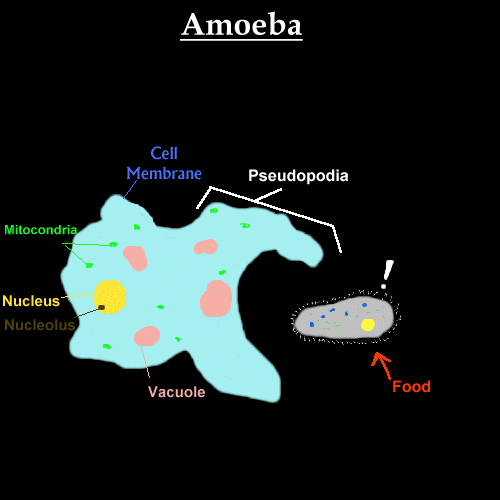Amoebas are unicellular organisms classified by the pseudopodia,
or false foot, that they use for locomotion or feeding. There
are hundreds of different species of amoebas, ranging in size from
about .25mm to 2.5mm. Some species live on aquatic plants and some
in moist ground; others are parasitic in animals. Amoebas are
considered the most primitive of animals and are classified into
the kingdom Protista.
Amoebas also the pseudopodia for feeding. The amoeba senses smaller organisms, like parameciums, and the pseudopodia for around the food. When the food is completely enveloped, a vacuole forms around it and it is slowly digested. An enzyme in the vacuole digests the unfortunate food organism, and its nutrients dissolve into the amoeba's cytoplasm. Undigested food and wastes are excreted through the cell membrane, which also absorbs oxygen from the surrounding water and eliminates carbon dioxide.
To reproduce, amoebas split into two equal parts, called daughter cells. These cells feed and grow until they are big enough to split off again.
| Amoeba Parts |
|---|
 |